The Nat/Geo Lindblad tour spent today and the next two days at the Osa Peninsula. This morning we explored the coastal area of the Corcovado National Park, and in the afternoon we took a short Zodiac tour on the Agujites River.
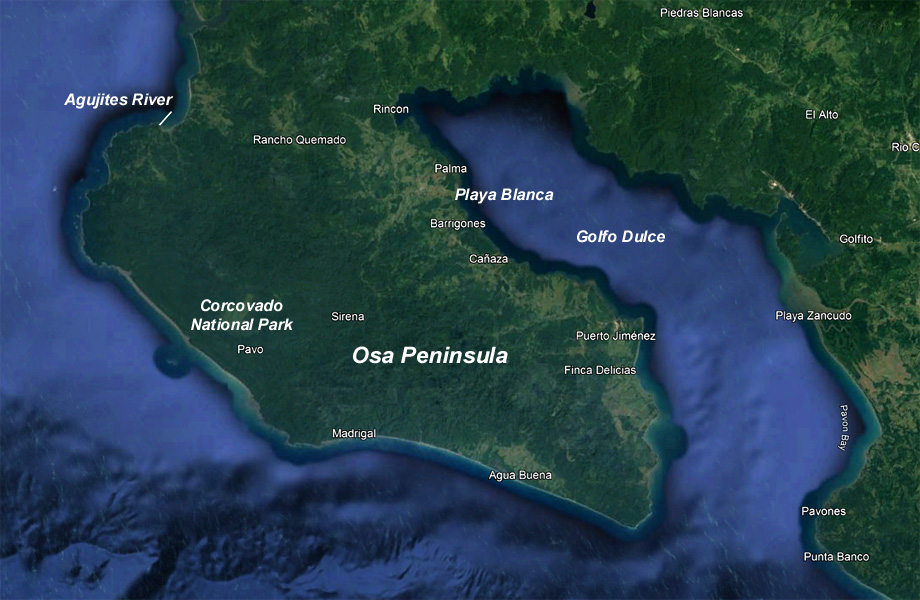
Osa Peninsula
The Nat/Geo Lindblad tour spent today and the next two days at the Osa Peninsula. This morning we explored the coastal area of the Corcovado National Park, and in the afternoon we took a short Zodiac tour on the Agujites River.
|
As soon as we got onto the shore, we were treated to the antics of several Spider monkeys.

Spider Monkey

Spider Monkey
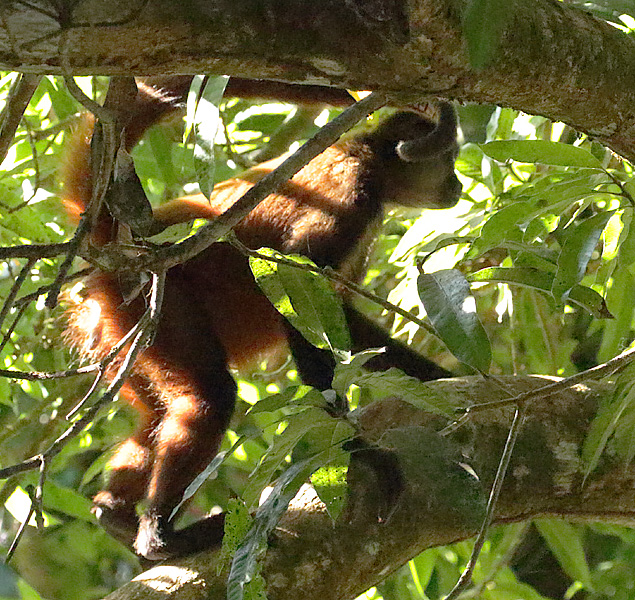
Spider Monkey
The short hike into the tropical forest produced a few bird species, but it was tough to see any birds, and really dark for photography. At the edge of the forest I was able to photograph a female Spot-crowned Euphonia, saw a few Lesser Greenlets, and heard and saw a flash of the orange throat of an Orange-collared Manakin as it flew away. This was the first time I met Max Vindas as the NatGeo guide for our small group, and decided to go with him as much as possible on hikes during the rest of this trip.
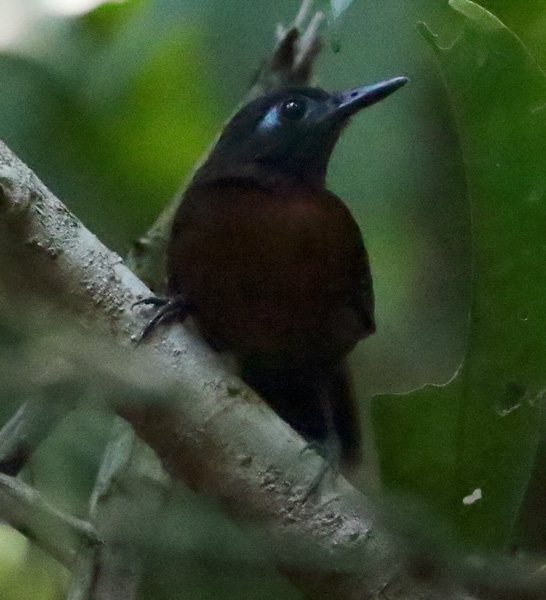
Chestnut-backed Antbird

Spot-crowned Euphonia
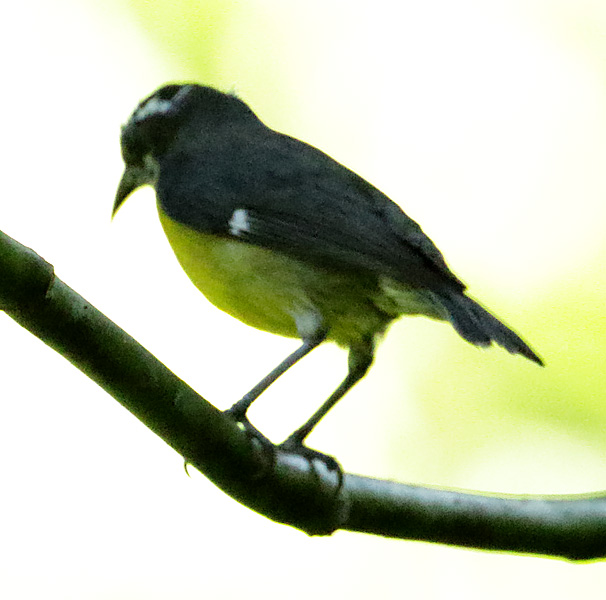
Bananaquit
We spent the rest of the morning on and near the beach area. I saw male and female Scarlet-rumped (Cherrie's) Tanagers but would not get photos of this species until later in the trip, Scarlet Macaws, Boat-billed Flycatchers, a Yellow-bellied Flycatcher, a Chestnut-sided Warbler, a Bay-headed Tanager, and a few other avian species.

Scarlet Macaws
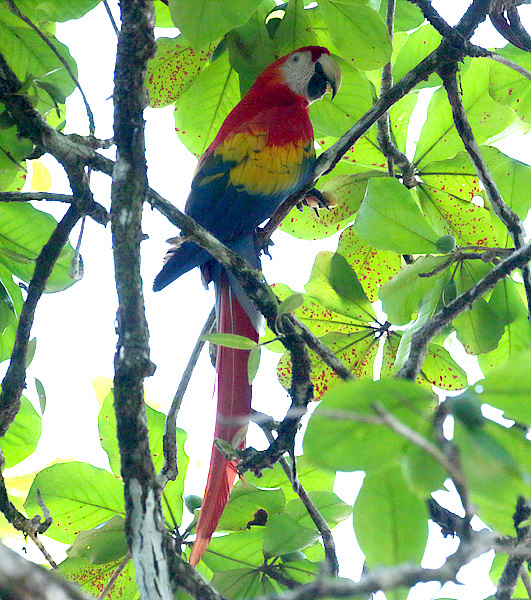
Scarlet Macaw
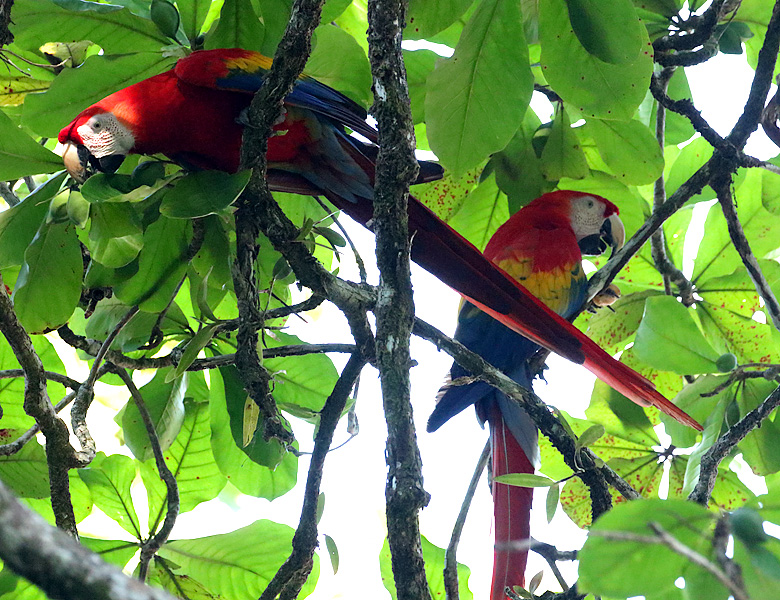
Scarlet Macaws
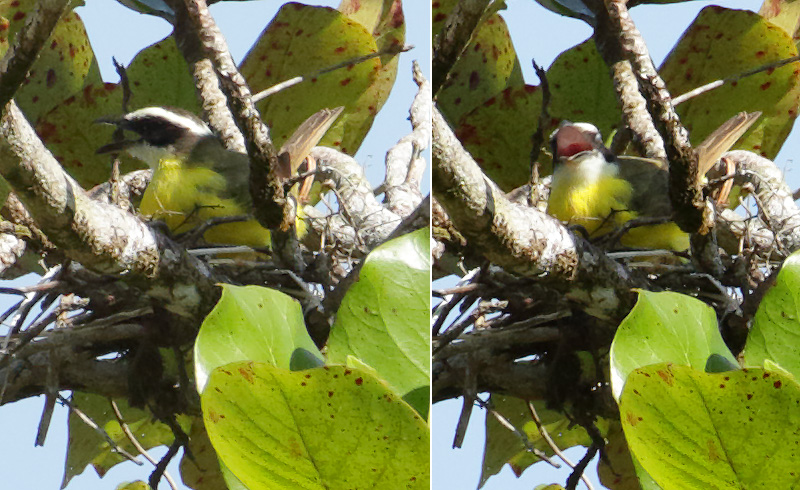
Boat-billed Flycatcher
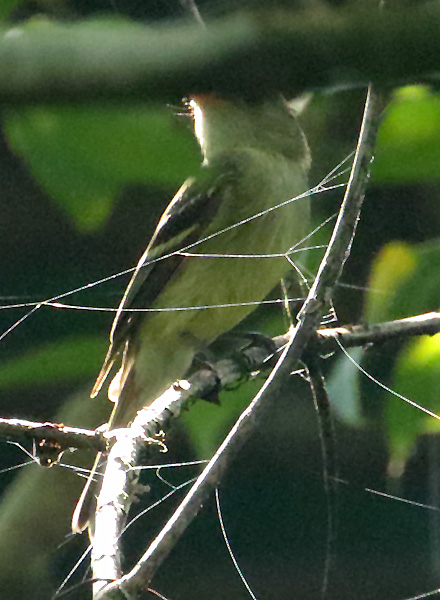
Yellow-bellied Flycatcher

Chestnut-sided Warbler
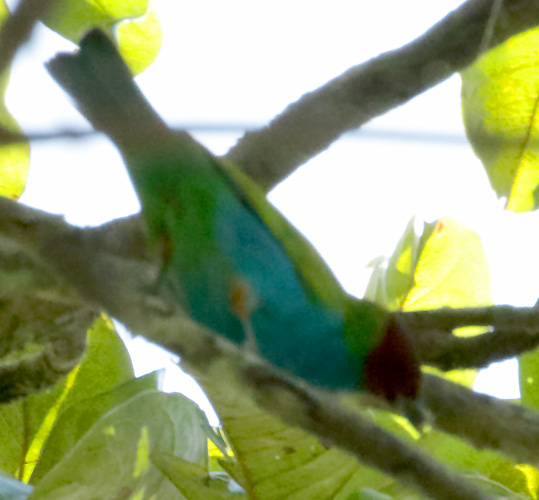
Bay-headed Tanager
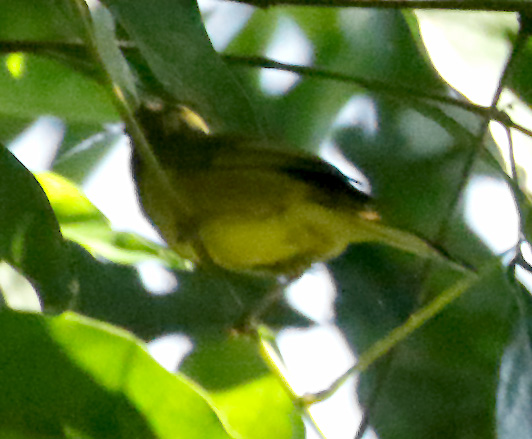
White-shouldered Tanager

White-shouldered Tanager
In the afternoon, we took a short Zodiac tour on the Agujites River. I made a photographic equipment choice that turned out the problematic. My usual lens is a 100 to 400mm zoom lens that I keep at f/8.0 (image quality "sweet spot" for the lens), and always at 400mm unless I have to zoom out for a wider field of view. But I also brought along my 200mm f/2.8 lens and a 1.4x teleconverter that yields a good image quality, 280mm, f/4.0 equivalent lens. I thought that it might give me more light on the river, and if we were close to wildlife on the banks, 280mm would be good enough magnification. Well, that didn't work out so well. I hadn't used this combo for some time, and perhaps the internal contacts were dirty. As soon as we entered the mouth of the river, we saw one of my target species: a Boat-billed Heron. Not only would my camera not auto-focus, it would not fire off a shot even if I manualy focused the lens. I quickly turned off the camera, removed the lens and the teleconverter, re-attached them, and was able to get off a few shots.
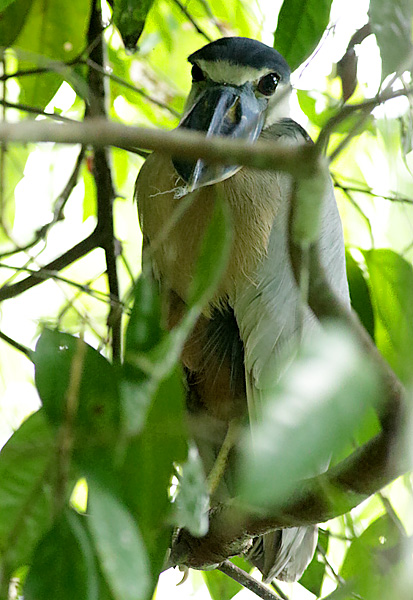
Boat-billed Heron
Well, I thought that the camera equipment problem was now solved. We continued on, and saw a few more bird species and monkeys.
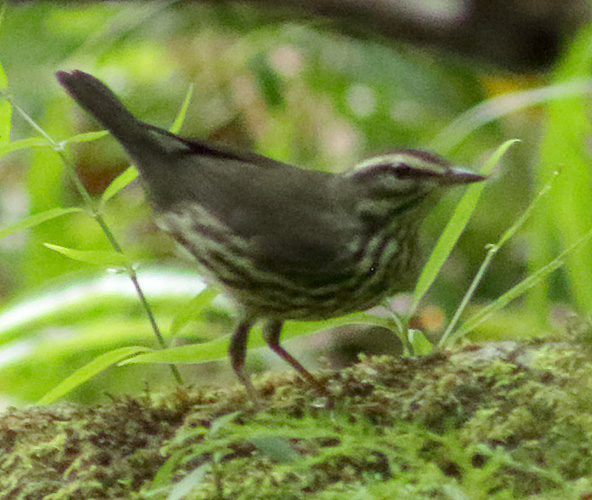
Northern Waterthrush
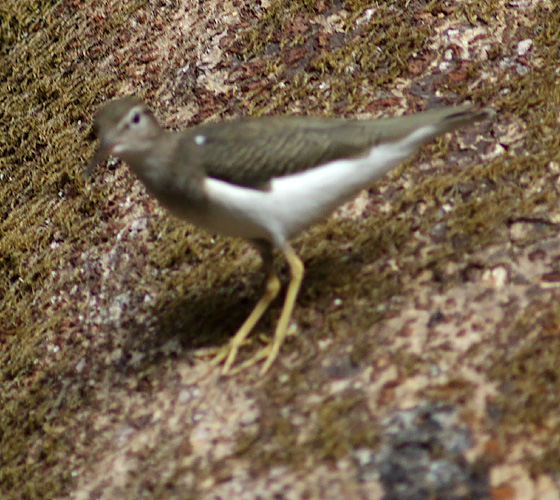
Spotted Sandpiper
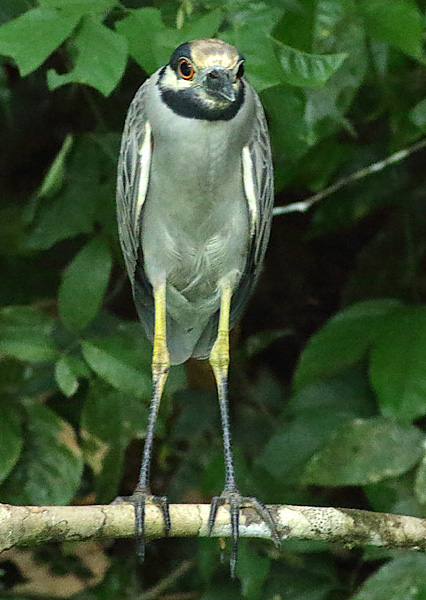
Yellow-crowned Night-Heron
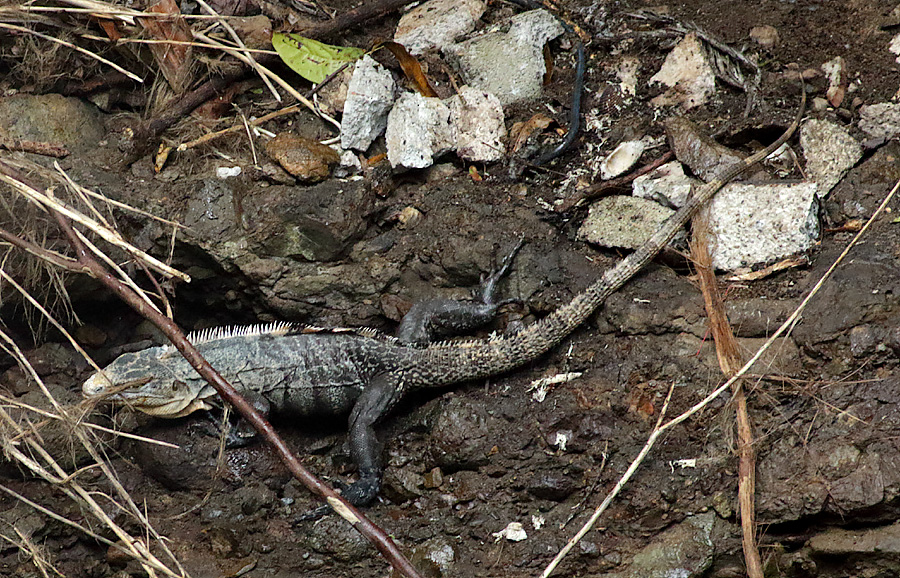
Iguana
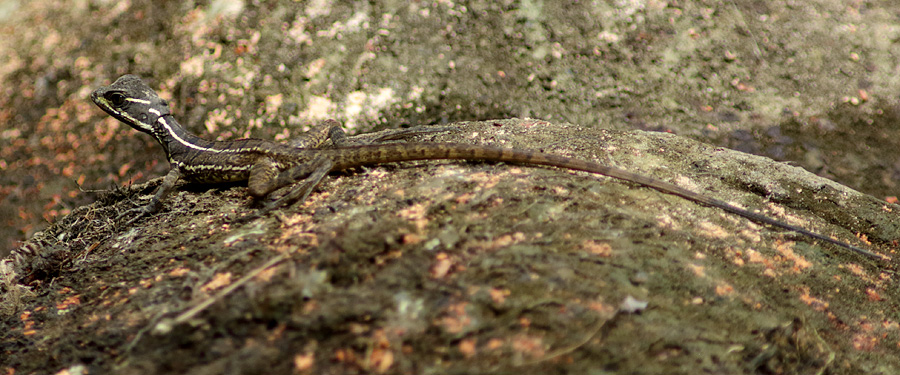
Lizard
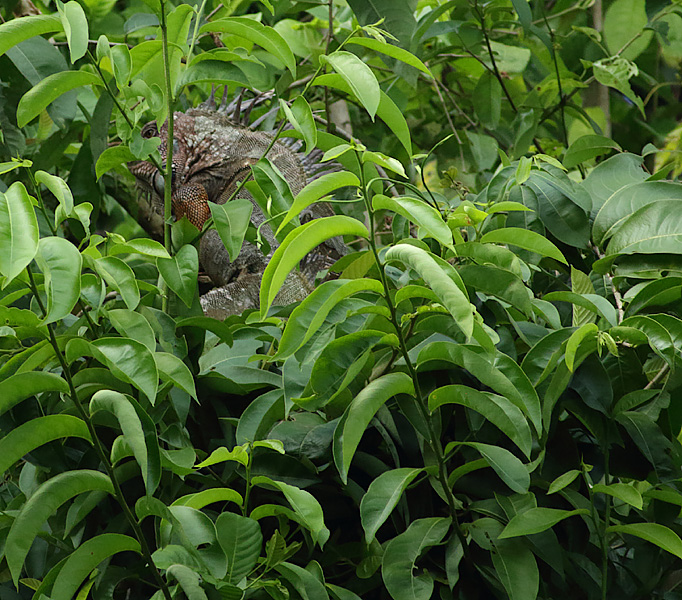
Iguana

Spider Monkeys; mama and little one
Most birders have nemesis species: bird species I never have seen, but have chased and/or should be there but aren't, especially when others have just seen the species. I have two nemesis bird species: Harlequin Duck and Rufous-capped Warbler. I have tried to see Harlequin Ducks at various locations on the eastern coast of the U.S. as well as in Alaska, and have tried twice for Rufous-capped Warblers in Arizona. The Harlequin Duck is not a possibility for this trip, but the Rufous-capped (Chestnut-capped) Warbler is possible, but unlikely for me to see on this trip. I also have another nemesis-like bird species: Green Kingfisher. My Virginia birding buddy for 10+ years, Walt Childs, and I did a week long birding trip to Texas in 2015. One of our first stops was at Estero Llano Grande State Park, where one of our good friends, Huck Hutchins, was the birding activity mananger for the park. Huck met us in the parking lot, and immediately asked if I had ever seen a Green Kingfisher. When I said no, he replied that there was one 100 feet away on the river bank. We quickly walked over there, and it was gone, and though not that unusual of a species for southern Texas, I never saw one during the entire week trip there.
So we're nearing the end of the Zodiac tour when the naturalist calls out Green Kingfisher, and we head for it. I lifted up my camera for a shot, and once again it would not focus or fire off a shot. PANIC! Would Green Kingfisher join the ranks of my nemesis bird species list? Once again, I quickly took everything apart, re-assembled the lens and teleconverter, and was able to get off two, just slightly out-of-focus, shots before the Green Kingfisher flew away.
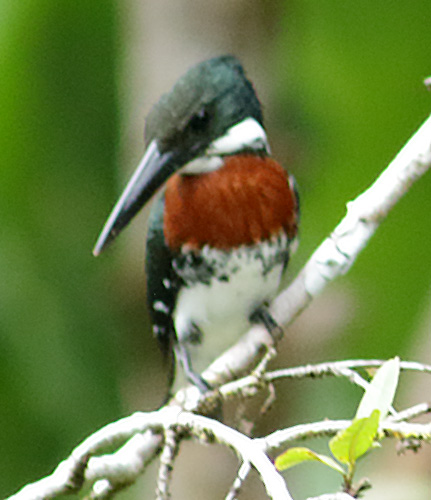
Green Kingfisher

Green Kingfisher
Today's life birds (trip# 26-36): Chestnut-backed Antbird; Spot-crowned Euphonia; Orange-collared Manakin; Scarlet-rumped (Cherrie's) Tanager; Scarlet Macaw; Boat-billed Flycatcher; Lesser Greenlet; Bay-headed Tanager; Boat-billed Heron; White-shouldered Tanager; Green Kingfisher.